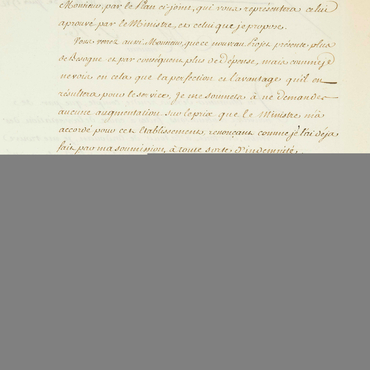
- Home
- The Age of Enlightement
- The Enlightement in the lighthouses
- Illuminating the city and lighting the lighthouses
At the end of the eighteenth century, the renovation of urban lighting systems became a important issue for the country's major cities, who sought to improve the safety of their inhabitants. Competitions were launched to find "the best means for lighting the streets of a large city during the night, with a combination of clarity, ease of service and thrift." An entrepreneur named Tourtille-Sangrain (?–?), with the help of the engineer Bourgeois de Chateaublanc (1698–1781), won the contract for lighting the city of Paris in 1769. The pair proposed streetlamps set with metal reflectors that they called réverbères. Their lanterns were hexagonally-shaped, with a cage that was fourteen pouces high (about 36 cm), with a copper cover and an upper dome. Bohemian glass was used, made by the Saint-Quirin workshop. The lamps were fitted with three, four or five wicks and burned rapeseed oil. One or more small round reflectors reflected the light onto walls or passers-by. Lamplighters, called allumeurs de réverbères, criss-crossed the city streets, adding oil to the lamps. The reflector concept was quickly applied in other fields. In 1771, Tourtille-Sangrain installed a réverbère in the lighthouse at Saint-Mathieu (Finistère), and another in the one at La Hève (Seine-Maritime). These were large pieces of equipment – several metres tall – fitted with various reflectors between 20 and 30 cm wide that were attached to arches. Tourtille-Sangrain, given how easy it was to maintain and manage his devices, was awarded the lighting contract for all of the lighthouses in France, which numbered about ten by that time. The old coal burners were all replaced, in spite of the complaints of sailors, who observed a sharp drop in the light given off by an oil flame compared to a mineral fuel.

